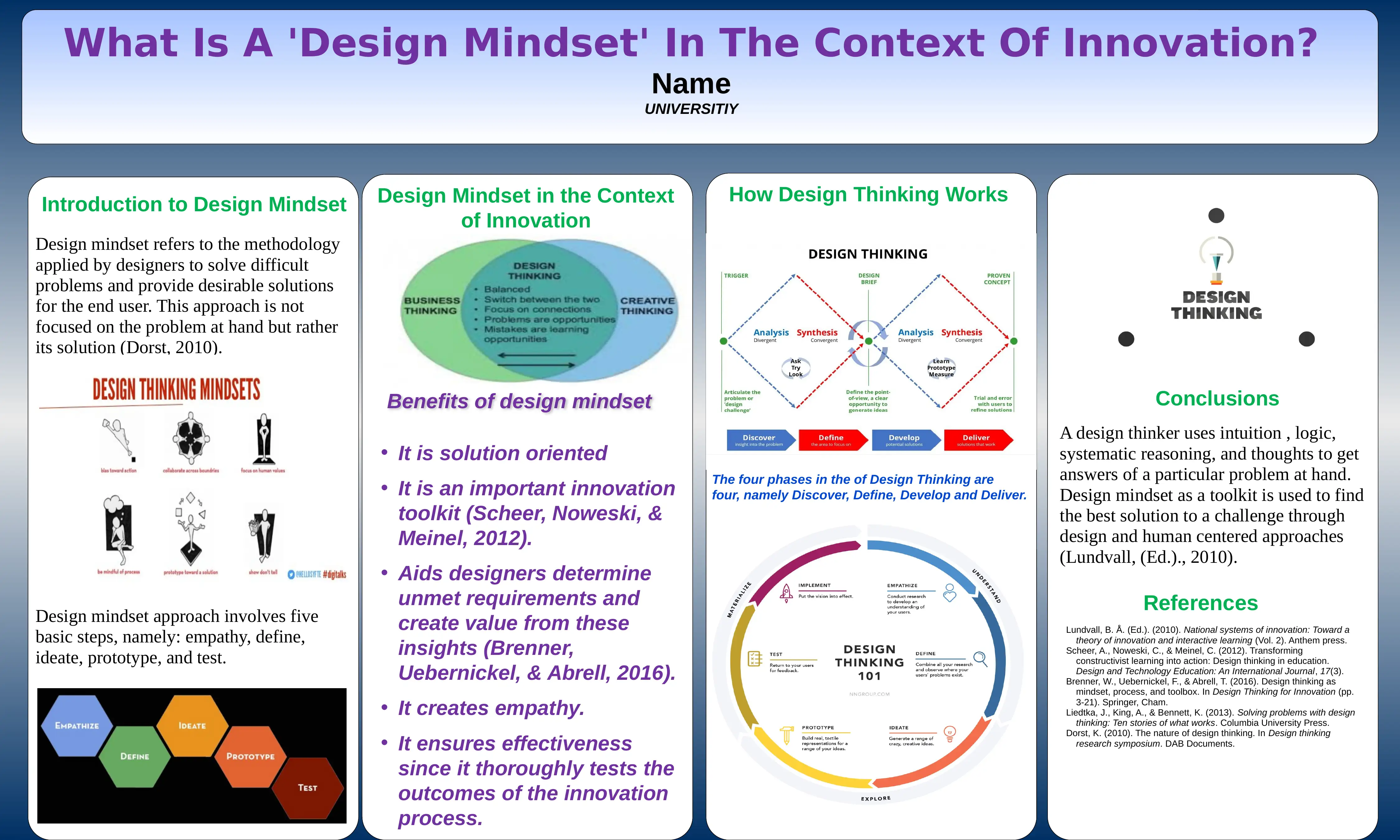Universitiy MGMT20140: Design Mindset in Innovation Project
VerifiedAdded on 2023/06/09
|1
|413
|498
Project
AI Summary
This assignment delves into the concept of the 'design mindset' within the context of innovation. It defines the design mindset as a problem-solving methodology used by designers to create desirable solutions for end-users, emphasizing the solution-oriented approach rather than focusing on the problem itself. The assignment outlines the benefits of adopting a design mindset, highlighting its role as an important innovation toolkit, its ability to determine unmet requirements, generate value, create empathy, and ensure effectiveness through thorough testing. The core of the design mindset is presented as a five-step process: empathy, define, ideate, prototype, and test. Additionally, the four phases of Design Thinking—Discover, Define, Develop, and Deliver—are mentioned. The assignment emphasizes the use of intuition, logic, systematic reasoning, and thoughts to find optimal solutions and presents the design mindset as a human-centered toolkit. References support the concepts discussed, reinforcing the importance of design thinking in education and innovation.





![[object Object]](/_next/static/media/star-bottom.7253800d.svg)